Great choice! Your favorites are temporarily saved for this session. Sign in to save them permanently, access them on any device, and receive relevant alerts.
- Sailboat Guide

Dragon (Int)

Dragon (Int) is a 29 ′ 2 ″ / 8.9 m monohull sailboat designed by Johan Anker and built by Abbott Boats Inc., Børresen Bådebyggeri, Abeking & Rasmussen, Endeavour Yachts, and Petticrows starting in 1928.

Rig and Sails
Auxilary power, accomodations, calculations.
The theoretical maximum speed that a displacement hull can move efficiently through the water is determined by it's waterline length and displacement. It may be unable to reach this speed if the boat is underpowered or heavily loaded, though it may exceed this speed given enough power. Read more.
Classic hull speed formula:
Hull Speed = 1.34 x √LWL
Max Speed/Length ratio = 8.26 ÷ Displacement/Length ratio .311 Hull Speed = Max Speed/Length ratio x √LWL
Sail Area / Displacement Ratio
A measure of the power of the sails relative to the weight of the boat. The higher the number, the higher the performance, but the harder the boat will be to handle. This ratio is a "non-dimensional" value that facilitates comparisons between boats of different types and sizes. Read more.
SA/D = SA ÷ (D ÷ 64) 2/3
- SA : Sail area in square feet, derived by adding the mainsail area to 100% of the foretriangle area (the lateral area above the deck between the mast and the forestay).
- D : Displacement in pounds.
Ballast / Displacement Ratio
A measure of the stability of a boat's hull that suggests how well a monohull will stand up to its sails. The ballast displacement ratio indicates how much of the weight of a boat is placed for maximum stability against capsizing and is an indicator of stiffness and resistance to capsize.
Ballast / Displacement * 100
Displacement / Length Ratio
A measure of the weight of the boat relative to it's length at the waterline. The higher a boat’s D/L ratio, the more easily it will carry a load and the more comfortable its motion will be. The lower a boat's ratio is, the less power it takes to drive the boat to its nominal hull speed or beyond. Read more.
D/L = (D ÷ 2240) ÷ (0.01 x LWL)³
- D: Displacement of the boat in pounds.
- LWL: Waterline length in feet
Comfort Ratio
This ratio assess how quickly and abruptly a boat’s hull reacts to waves in a significant seaway, these being the elements of a boat’s motion most likely to cause seasickness. Read more.
Comfort ratio = D ÷ (.65 x (.7 LWL + .3 LOA) x Beam 1.33 )
- D: Displacement of the boat in pounds
- LOA: Length overall in feet
- Beam: Width of boat at the widest point in feet
Capsize Screening Formula
This formula attempts to indicate whether a given boat might be too wide and light to readily right itself after being overturned in extreme conditions. Read more.
CSV = Beam ÷ ³√(D / 64)
Following a competition organised by the Royal Yacht Club of Gothenburg, the Dragon was conceived as a “day boat” or small coastal cruising boat. Selected as the 3 man keelboat for the 1948 Olympic Games in London. The designer, Johann Anker was killed in World War II. After the war, his sons waived the royalty for the design to English builders as a token of appreciation to that nations support of Norway in it’s darkest hour. Although it’s Olympic class status ended in 1972, it has remained popular around the world in to the 21st century.
Embed this page on your own website by copying and pasting this code.
- About Sailboat Guide
©2024 Sea Time Tech, LLC
This site is protected by reCAPTCHA and the Google Privacy Policy and Terms of Service apply.
The Dragon int is a 29.17ft fractional sloop designed by Johann Anker and built in wood or fiberglass by Abbott Boats Inc. since 1928.
The Dragon int is a moderate weight sailboat which is a good performer. It is very stable / stiff and has an excellent righting capability if capsized. It is best suited as a coastal cruiser.
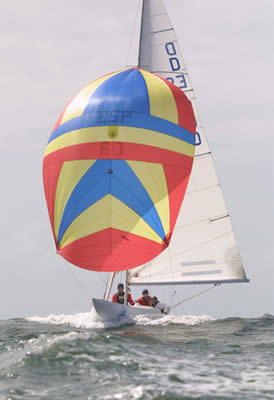
Dragon int for sale elsewhere on the web:

Main features
Login or register to personnalize this screen.
You will be able to pin external links of your choice.

See how Sailboatlab works in video

We help you build your own hydraulic steering system - Lecomble & Schmitt
Accommodations
Builder data, other photos.
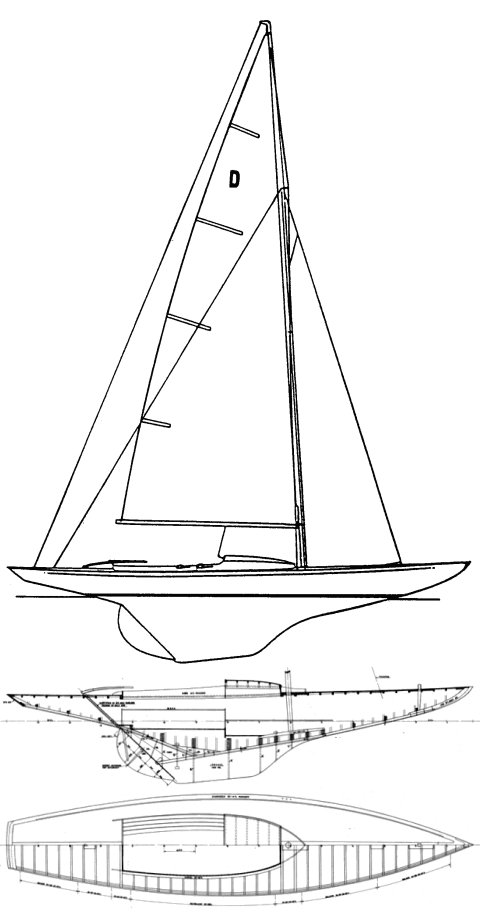
Modal Title
The content of your modal.
Personalize your sailboat data sheet
- +351 219 233 147
- [email protected]
Dragon Class
History of the dragon, the first dragon.
In 1928, a design competition was launched by the Royal Gothenburg Yacht Club in Sweden for an affordable cruising keelboat that was “relatively fast, externally attractive and seaworthy.” Johan Anker (1871-1940), already an eminent yacht designer and winner of an Olympic Gold Medal in the 6-meter class, won the competition with his one-design entry based on the 20 square-meter rule. The name of the design was, of course , the Dragon and the first was built in 1929. The dimensions were, and remain, LOA 8.9m, LWL 5.7m, beam 2.0m and draught 1.2m with a total overall weight of 1,700 kg. The Dragon quickly became popular in many nearby countries. International competition began with the donation of the Dragon Gold Cup by the Clyde Yacht Club Conference in 1937.
Olympic Era
After many yacht classes disappeared during World War II, Peter Lunde, one of Norway’s top Dragon sailors, traveled to London in 1946 with the goal of promoting new international regatta classes. He brought with him the Anker family’s permission to use their drawings internationally, as long as they were approved by the International Yacht Racing Union (now known as World Sailing). The Dragon was awarded Olympic status that year. It remained the Olympic one-design three-person keelboat class from 1948 to 1972, during which time it was upgraded for racing with the addition of a genoa and spinnaker, as well as supporting rigging changes. In 1961, the International Dragon Association (IDA) was formed to manage the evolution and consistency of the boat. This era saw the greatest expansion of the Dragon class worldwide, with individual Dragons or Dragon fleets on almost every continent.
Olympic Aftermath
After being dropped from the Olympics in 1972, there was much debate about the future of the Dragon class. Until that point, Dragons were built with carvel-planked wood, but fiberglass was the latest technology. The IDA, in collaboration with Børresen in Denmark, developed plans for a fiberglass Dragon that would maintain the competitiveness of the wooden Dragons. The class owes a great deal to Børresen, who managed the transition from wood to fiberglass construction expertly, ensuring that both types of boats could compete on equal terms. Despite this important development, the Dragon class declined and was significantly reduced in numbers in many countries. However, it continued to attract top sailors looking for strong competition in a non-Olympic class. In the mid-1980s, the class began to grow again with the emergence of a second major builder, Petticrows . By the mid-1990s, the average number of boats built each year was 25-30, and major competitions regularly had 80-100 boats.
Modern Days
Today, the Dragon class is active in 30 countries on five continents, with over 1,400 registered boats and many more used for day sailing or cruising. The World Championships are held in odd-numbered years, and the European Championships are held annually. The Gold Cup, held annually in certain specified European countries, is unique in that all six races count without discard.
The crew of three or four makes for a tightly knit unit without the need for hired heavyweights. Class rules ensure level racing, and the ease of trailing makes international competition accessible to all budgets. Spars and sails are easily adjustable while racing, allowing a skilled crew to optimize the boat for any conditions. Dragon races cannot be won by brute strength. The Dragon’s design philosophy has made it a class where extremely close racing is the norm, and where races are won by the crew’s mastery of the conditions and tactics on the course.
Plenty of information regarding the class, its various regattas and championships is available via the International Dragon Class Association website .

Privacy Overview
Yachting World
- Digital Edition

Breathing on the Dragon class – how the long-lived keelboat gets a makeover in Dubai
- Matthew Sheahan
- July 3, 2015
One of the most famous keelboat classes in the world gets a huge makeover in Dubai. Matthew Sheahan went to find out more

The new Dragon from Premier Composite Technology has been subtly refined in all areas
Receiving Olympic status is not always the blessing you might expect. The rate at which some of the world’s best sailors and teams refine and develop Olympic class boats and the costs that ensue can be a problem in the longer term. You can end up with highly refined boats that often have short competitive shelf lives, taking them out of the normal league for amateur sailors and damaging the grass roots support for a class.
So gaining Olympic credentials can prove to be a poisoned chalice. Some classes have even been said to have actively discouraged the attention of the Olympic committee for fear of alienating their mainstream constituents.
But not the Dragon. Designed in 1929 by Norwegian Johan Anker, the Dragon was made an Olympic class in 1948 and remained one until 1972, since when the elegant and distinctive keelboat has continued to be popular, offering good competition for a broad spread of abilities.
Represented in more than 26 countries, the worldwide fleet is over 1,500 with a high standard of racing for its annual world and European championships as well as the prestigious Gold Cup, which regularly attracts around 100 entries.
On the technical front the class has also managed to strike a careful balance between being a one-design and having areas open to restricted development.
Back to basic design
Yet despite this there have been few, if any, design studies that have gone back to basics and started afresh in optimising the boat. Until now.
Apart from its impressive track record in composite work in architectural, aviation and rail projects, Dubai-based Premier Composite Technology is best known in the marine world for building grand-prix raceboats such as the Farr 400, the GC32 foiling cats and most recently the Farr 280.

But now, after a two-year study that involved designing seven hulls and building five prototypes, the company has launched its brand new, breathed-on Dragon.
Driven by top Dragon sailors Markus Wieser and Hendrik Witzmann, the project pulled in some serious players, including Andy Claughton from the Wolfson Unit in Southampton, Paolo Manganelli, senior engineer at Gurit, and designer Klaus Roeder. They started with seven different hull and keel sections, which were tested using a velocity prediction program (VPP) from which two designs were then selected.
“Initially we looked at a number of radical options,” explains Witzmann. “From these studies there appeared to be some big gains in some areas, but these also meant having to accept some big compromises. In the end we opted for two designs that were more conservative and looked more likely to be good all-rounders.”
While there is room to alter hull shapes within the class rules, the tolerances are small. One example is the measurement around the hull which allows a maximum tolerance of 0.05 per cent at each of the seven templated measurement stations. This translates to a maximum tolerance of 16mm measured away from the hull at midships and just 8mm in the forward sections. The scope for tweaking the hull shape is clearly small, but nonetheless considered to be worthwhile by PCT.
“By creating a shape that is narrow amidships and fuller in her ends we have produced a hull that has a long waterline length,” says Witzmann.
Improved stiffness
Improved stiffness was also a technical goal, especially longitudinally. “Fore and aft stiffness is particularly important on a Dragon because of the running backstays,” continues Witzmann, “as they can induce a good deal of bending in this plane. Keeping the boat stiff maintains the waterline length and hence her maximum speed.”
Also contributing to increased stiffness, the PCT Dragon has all bulkheads bonded into the hull rather than relying on an inner liner for the internal structure.

Decks are clean and watertight
The hull itself is a solid laminate construction using woven rovings and unidirectional fibres throughout rather than chopped strand mat, of which there is none. The PCT Dragon even avoids the use of gelcoat in order to allow more structural material to be included within the rule limit on panel weight of 12kg/m 2 and the resin is vacuum-infused to ensure a tight control on this weight. Under the rules no carbon or Kevlar is allowed in the hull or deck.
But while stiffness was important, so too was keeping weight out of the ends, both in the structure and in the amount of water that might find its way inside. Dispensing with a spinnaker chute and launching the kite from a bag in the cockpit 470-style helped to reduce the weight of the chute and its tube, as well as preventing water being shipped through the bow.
The keel came in for some special attention. “Normally the keels are cast iron, but on this boat we used a CNC milling machine,” says Witzmann. “This is the first time this has been done on a Dragon and the process allows us to get close to the maximum keel weight of 1,010kg, as well as achieving a perfectly symmetrical shape.”
Unlike other Dragons where the ballast for the keel is encapsulated in the hull/keel laminate, the PCT Dragon’s keel is fitted from below and coated with a thin layer of glassfibre, which helps to achieve a slightly lower centre of gravity.
Cockpit layout
But it’s not just the structural elements that have come up for review; the layout of the cockpit has also been studied carefully. Among subtle changes, the coachroof and coamings have been altered to allow better control of the horizontal jib car travellers and more comfortable positions for hiking.
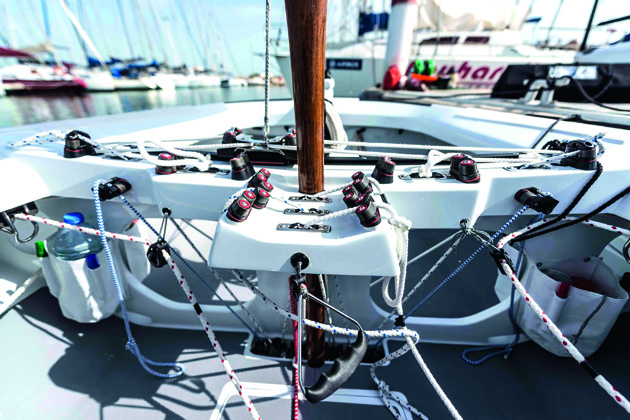
A modern Dragon’s cockpit is a string fest and a dream for deck hardware suppliers
The position of the mainsheet traveller drew plenty of attention as the team tried to exploit all the structural benefit they could from this member, as well as making it more efficient from a sail trim point of view. But the area also provided another important detail: support for the helmsman. Toestraps are not allowed in the class so the shape and positioning of the central unit was refined to allow foot support when hiking.
The theory was put into practice for the first time in October 2013 when the first prototype was launched in Dubai. Since then two boats have been shipped to Europe for further testing. This season the company will start to build production versions and engage in the international circuit.
For all the detailed analysis and testing of the previous two years it is here on the circuit in this fiercely competitive fleet that the results will be revealed and the company finds out whether breathing on the Dragon really has made her fly.
New Dragon in build
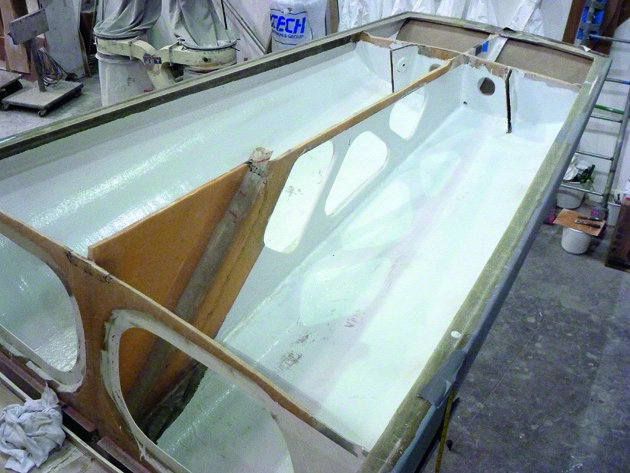
The longitudinal bulkhead in the after section extends up to the underside of the deck to maximise the stiffness of the boat in this area

Refining the mainsheet traveller control area helps when it comes to foot support for the helmsman. Toestraps are prohibited by the Dragon class rules

All bulkheads and structural members are laminated into the hull rather than use an inner liner

Among subtle changes, the flared coachroof allows for more efficient horizontal jib travellers

She may be elegant above decks, but a snake pit below as many of the control lines run under deck

Milling the keel from an oversized casting achieves precise weight and a perfectly symmetrical section
This is an extract from a feature in the June issue of Yachting World
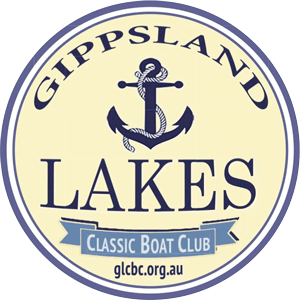
International Dragon Class Keelboat Siena AUS 118 Built 1967
Siena is an International Dragon Class Keelboat built in Denmark in 1967 by the renowned Borrensen Boatyard. She is named for the beautiful red brown colour of her Honduras Mahogany varnished hull.
Siena was purchased by Mr Jaemie Wilson in Sydney in 2009. Siena was lovingly restored on Raymond Island from March 2009 to November 2010 by Boat Builder Mr John Johnson (also a timber Dragon owner of 1962 Barnett AUS 82 “Ghost”), with assistance from Jaemie and his family and friends.
Siena is an ex-Olympic trial boat having been originally purchased from Borrensen’s by the Victorian Olympic representative crew Mick Brooke, Alan Cain and John Coon from the 1960 Rome Olympics. Siena was launched at Royal Geelong Yacht club, and has previously been campaigned out of Royal Melbourne Yacht Squadron, Royal Brighton Yacht Club and Royal Sydney Yacht Squadron.
Siena has a well-known and competitive history in the Dragon Class. She has competed in a number of major regattas over her lifetime including the 1971 Hobart World Dragon Championships and after restoration, the 2011 Brighton World Dragon Championships. Former owners have included the late Mr Alan Cain, Olympic Dragon Representative, Mr Mike Fletcher a former Olympic Sailing Coach and Mr Robert Alpe Former Vice President of the International Dragon Association.
Siena is a classic wooden Dragon and is constructed of Honduras Mahogany planks, oak ribs and teak deck and cabin top. With the switch to fibreglass construction in the 1970s, many teams have favoured newer fibreglass boats. However due to tight class rules, timber boats remain fiercely competitive. It is the timber Dragons that turn heads and stand out from the crowd in any race due to the innate beauty of their varnished timber hulls.
The Dragon was designed in Norway in 1928 by Johan Anker a designer, yacht builder and yachtsman of great renown in the International Metre classes. With her beautiful classic sleek lines, the Dragon is one yacht that demands attention wherever she is sailed.
The Dragon is 8.90m (29ft 2in) long, with a beam of 1.95m (6ft 5in), draft of 1.2m (3ft 11in) and a hull weight of 1700kg (3, 700 Ib). Working sail area is 27.7 m2 (298 sq ft) with a 23.6 m2 (254 sq ft) Spinnaker. The dragon is raced with a crew of either 3 or 4 people with a maximum crew weight of 285 kg.
The Dragon is a prestigious class having been an Olympic class from 1948 until 1972. Australia’s John Cuneo won the Gold medal in the last appearance of the Dragon at the Olympics in 1972.
Today, over 1400 Dragons are registered worldwide in 26 countries, with the class being one of the most active and competitive in the world.
Dragons have had a presence on the Gippsland Lakes since the early days of the introduction of the class in Australia. There has been a recent upsurge in interest in the last 2 years with major regattas being held at Metung and Paynesville including the 2015 Dragon Victorian Championships which drew competitors from as far afield as Perth, Sydney and Hobart to enjoy the fine racing waters of our Lakes.

- glcbc.org.au
- Your Account
Dragon Class
Class contact information.
Click below
Class Email
Class Website
One-Design Class Type: Keelboat
Was this boat built to be sailed by youth or adults? Adult
Approximately how many class members do you have? 40
Photo Credit:Christopher Nordhoff
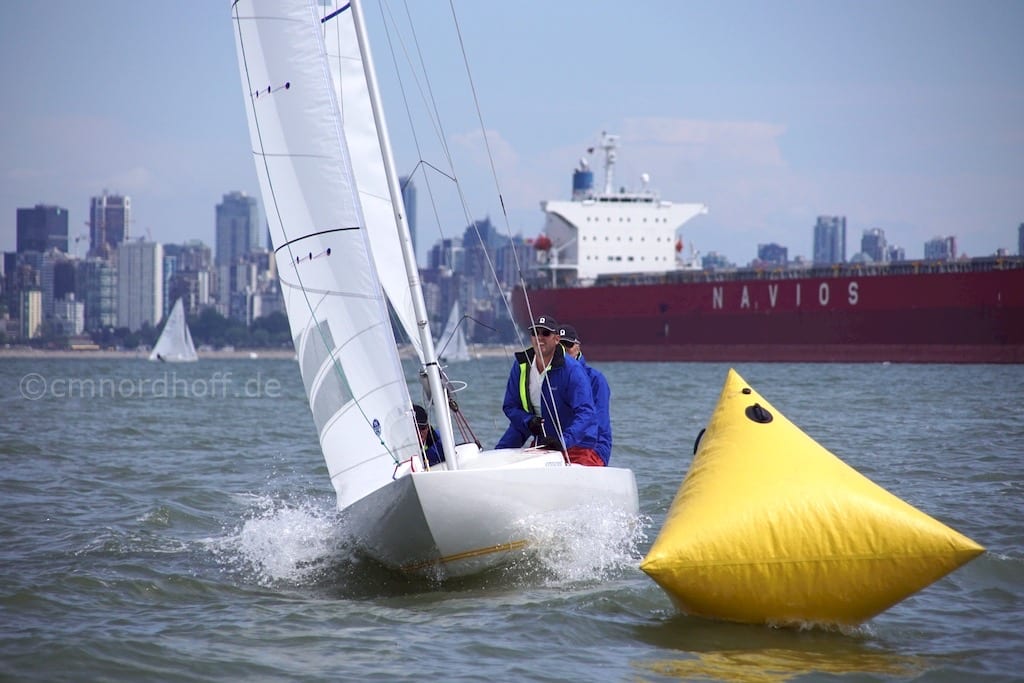
Photo Credit: Chip Riegel
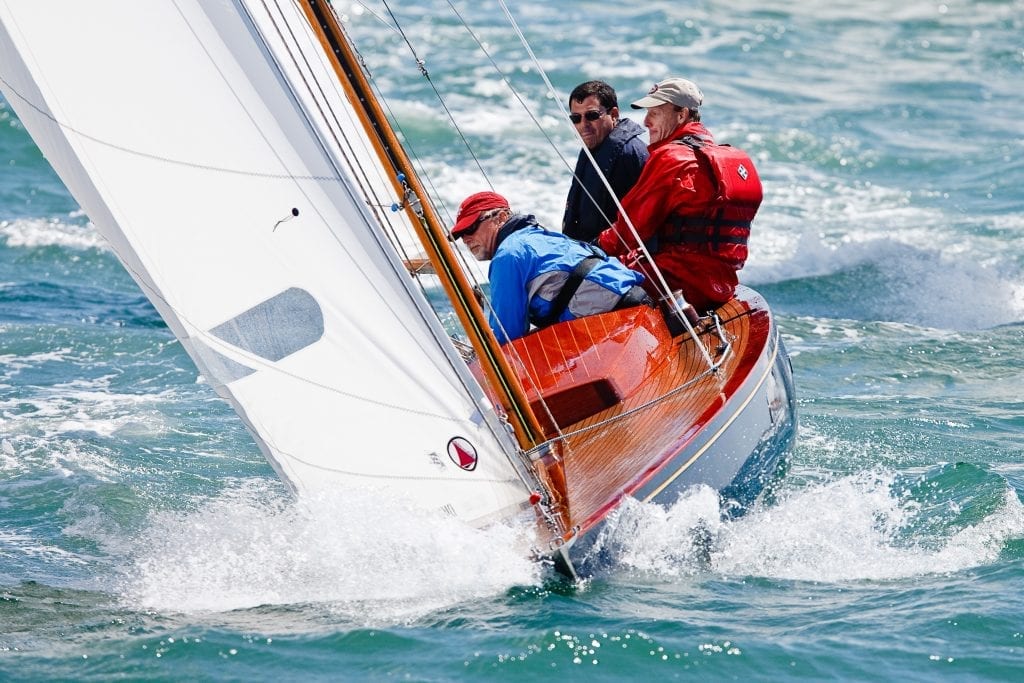
Photo Credit: Dale Northey
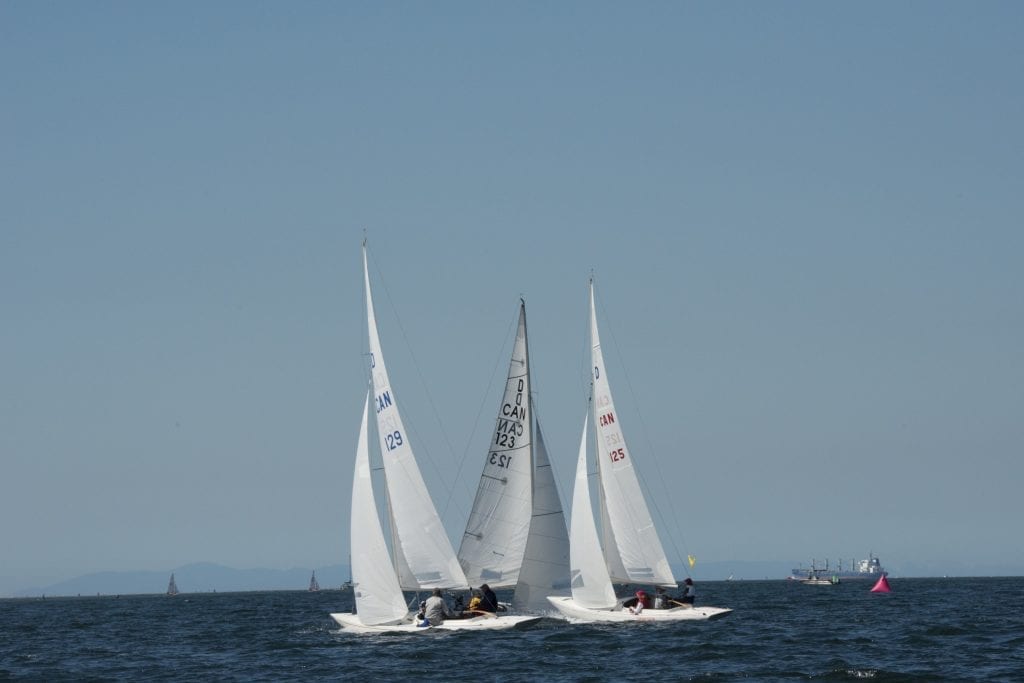
About Dragon Class
The Boat – Technically demanding, Classic lines, Modern spars and rigging The People – Raced by a range of ages and genders – crew of 3 or 4 within weight limits, Great social events The Class – Active in 30 countries, 5 continents, with 1420 registered boats, Racing at local, national and world levels, Classic and Corinthian trophies, Active racing fleets in NA on the West Coast, Great Lakes
IDA Yearbook 2020/2021: http://bit.ly/35Gtiwm
Boats Produced: 1500
Class boat builder(s):
BB Sailing I/S, Denmark Doomernik Dragons, Netherlands Petticrows Ltd, UK Pinnacle Yachts / Ridgeway Dragons, Australia Premier Composite Technologies LLC, United Arab Emirates Vejle Yacht Services APS / Royal Dragon, Denmark
Approximately how many boats are in the USA/North America? 80
Where is your One-Design class typically sailed in the USA? List regions of the country:
West Coast, North East, Great Lakes
Does this class have a spinnaker or gennaker? Yes
How many people sail as a crew including the helm? 4
Ideal combined weight of range of crew: max weight 628 lb (285 kg)
Boat Designed in 1929
Length (feet/inches): 29 feet 2 inches
Beam: 6 feet 5 inches
Weight of rigged boat without sails: 2 tons
Draft: 3 feet 10 inches
Mast Height: 35 feet (stepped to keel)
Tuning Guides Tuning Guides Tuning Guides
Class rules (pdf doc).
Back to One-Design Central
Copyright ©2018-2024 United States Sailing Association. All rights reserved. US Sailing is a 501(c)3 organization. Website designed & developed by Design Principles, Inc. -->
North American Dragon Class
The World's most popular One Design Keelboat
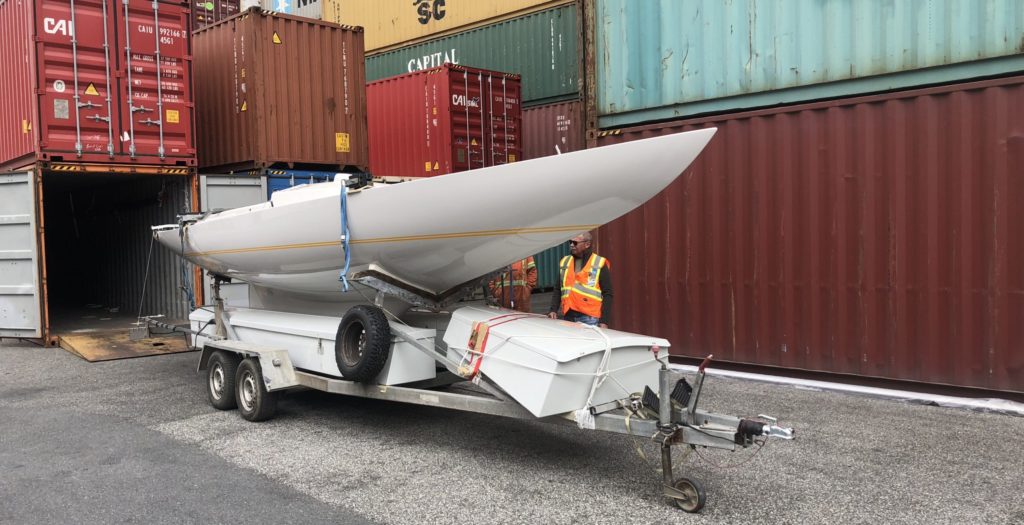
Buying a Used Dragon
Most wooden Dragons in North America are from the 50s and 60s. Some are big projects, requiring extensive structural work and the expertise of an experienced boatwright or shipwright to do the work. Others are in decent condition, and someone with some carpentry experience can make basic repairs and cosmetic fixes. There are also some beautifully restored wooden Dragons available from time to time.
Fiberglass Dragons were manufactured in North American in the 70s and 80s and most are still active in fleet racing. You can import new or used Dragons from Europe, where there is a good second hand market, especially in the UK, as well as in The Netherlands and Germany. Shipping costs vary between $3000 and $6000 to either the east coast or the west coast, and there is state/provincial sales tax and federal duty. Make sure you get a separate sales receipt for the boat and the trailer since they have different tax and duty (one is a boat and one is a vehicle). Most used Dragons from Europe are sold with a double-axle trailer and several sets of sails.
You should arrange to inspect the Dragon in person, or, if that’s not possible, have someone you trust do it. It’s also wise to get a marine surveyor to examine the boat. Besides checking the hull, sails, trailer and the standing rigging, it is worthwhile getting the keel bolts checked – depending on what materials used, there is sometimes corrosion.
If you are doing repairs or restoration, or just updating the rigging, remember to get a copy of the Class Rules and Plans to make sure your Dragon is still a Dragon when you are finished any repairs or rigging changes! Your best assurance that your boat is a Dragon, new or old, is a Builders’ Measurement Certificate; ask for it when you are considering a purchase.
Wooden Dragons For Sale
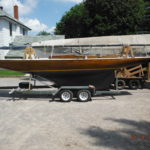
Fiberglass Dragons For Sale
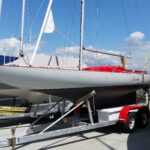
Dragons For Sale outside North America
British Dragon Association Doomernik German Dragon Association PCT Premier Dragon Petticrows
Think it’s too complex to import a Dragon? Contact us for information on importing a Dragon to the US or Canada.
Equipment For Sale
Dragon sails for sale – Jibs, mains, spinnakers. Excellent for club racing. North, Elvstrom and Hoj Jensen. Prices start at $325 OBO. Contact Miguel A. Casellas, Puerto Rico 787.403.4700

- DragonFlite95 Complete Boat Kits
- DF95 Rig Kits & Sails
- DF95 Replacement Parts
- DF95 Resources
- DragonForce 65 Version 6 Complete Boat Kits
- DF 65 Rig Kits & Sails
- DF65 Replacement Parts
- DF65 Resources
- FlySky Transmitter & Receivers
- RadioMaster Transmitters / Receivers / Accessories
- Joysway Transmitters & Receivers
- Adhesives & Glue
- Batteries & Chargers
- DSNA Accessories
- Apparel & Merchandise
- Hull & Deck Decals
- RC Fishing Surfer Complete Boats
- RC Fishing Surfer Complete Parts & Accessories
Sail Fast , SAIL SMALL with Dragon Sailing!
Preorders for df95 / df 65 coming again soon, left featured collection right.

Left Collection list Right

Newport Sailors Dive into the DragonFlite 95!

DF95 Restricted Class Rules Updated!


Dragon Sailing gets a new home!!
- Submit A Support Case
- Shipping Policy
- Return Policy
- Warranty Policy
- Terms of Service
- Do not sell my personal information
Class Rules and Plans
International dragon class rules, plans and measurements, privacy overview.
- New Sailboats
- Sailboats 21-30ft
- Sailboats 31-35ft
- Sailboats 36-40ft
- Sailboats Over 40ft
- Sailboats Under 21feet
- used_sailboats
- Apps and Computer Programs
- Communications
- Fishfinders
- Handheld Electronics
- Plotters MFDS Rradar
- Wind, Speed & Depth Instruments
- Anchoring Mooring
- Running Rigging
- Sails Canvas
- Standing Rigging
- Diesel Engines
- Off Grid Energy
- Cleaning Waxing
- DIY Projects
- Repair, Tools & Materials
- Spare Parts
- Tools & Gadgets
- Cabin Comfort
- Ventilation
- Footwear Apparel
- Foul Weather Gear
- Mailport & PS Advisor
- Inside Practical Sailor Blog
- Activate My Web Access
- Reset Password
- Pay My Bill
- Customer Service

- Free Newsletter
- Give a Gift

How to Sell Your Boat

Cal 2-46: A Venerable Lapworth Design Brought Up to Date

Rhumb Lines: Show Highlights from Annapolis

Open Transom Pros and Cons

Leaping Into Lithium

The Importance of Sea State in Weather Planning

Do-it-yourself Electrical System Survey and Inspection

Install a Standalone Sounder Without Drilling

Rethinking MOB Prevention

Top-notch Wind Indicators

The Everlasting Multihull Trampoline

In Search of the Snag-free Clew

What’s Involved in Setting Up a Lithium Battery System?

Reducing Engine Room Noise

Breaking Point: What Can Go Wrong With Your Yanmar?

Mildew-resistant Caulks for Boats

Can We Trust Plastic Boat Parts?

Repairing Molded Plastics

Mailport: Marine plywood, fuel additives, through bolt options, winch handle holders

The Day Sailor’s First-Aid Kit

Choosing and Securing Seat Cushions

Cockpit Drains on Race Boats

Rhumb Lines: Livin’ the Wharf Rat Life

Resurrecting Slippery Boat Shoes

Shoe Goo’s Gift to Sailors

Tricks and Tips to Forming Do-it-yourself Rigging Terminals

Marine Toilet Maintenance Tips

Learning to Live with Plastic Boat Bits

The Ultimate Guide to Caring for Clear Plastic
- Sailboat Reviews
Dragonfly 800
The dragonfly is a speedy danish import that goes head-to-head with the popular f-27..
At the 1992 U.S. Sailboat Show in Annapolis, Maryland, there were more than a dozen multihulls on exhibit. How times have changed; just a few years before, bitter from lack of interest by the boating public, multihull builders and designers seemed to be saying, “If you ain’t gonna buy me, then I ain’t available…it ain’t me you’re looking for, babe!” Scorned, they pretty much kept to themselves.
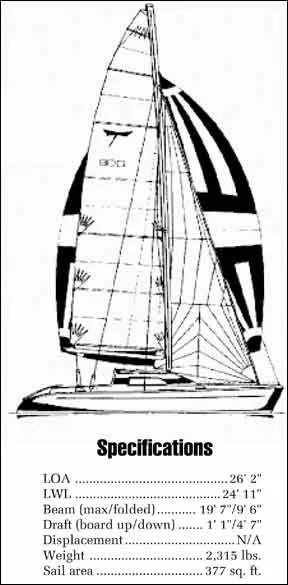
But many multihullers persisted. And the record times of the big cats and tris in long-distance singleand double-handed events were too spectacular to go unnoticed. We’ll never forget motoring out in a Mako photo boat to meet Chay Blyth and Rob James finishing the Two-Star off Newport, Rhode Island. His Brittany Ferries GB had made landfall off Cape Cod, then turned southwest toward Newport. We came upon him just as the sun set, making 20 knots in a rainbow of spume. It was hard to keep up, even with a Chrysler 318 V-8 under the saddle.
Over the years we’ve had a number of unforgettable experiences aboard multihulls—skimming across Saginaw Bay with Meade Gougeon aboard his 35-foot Adagio, sailing close-hauled downwind; cruising the Chesapeake aboard a Gemini catamaran, the only boat our son with cerebral palsy ever felt really comfortable on; and ripping up Buzzard’s Bay on Chris White’s Atlantic 50 cat, everything wire taut, slicing the chop as neatly as a Veg-A-Matic.
You’ll never be converted from a monohull to a multihull without first taking a ride. What gets you is this: 1. In light air, when you would be motoring your monohull, you can make six knots, and in higher wind speeds you double or triple your speed. A good multihull does to ocean passages what the Concorde does to air time between Paris and New York. 2. No heel. You begin to realize that much of the fatigue you’ve experienced in the past comes from sailing on your ear, every muscle tensed. 3. The multihull is a vast platform offering new freedom, new vistas, and, for the slightly misanthropic, new opportunities to get away from the rest of the crew. Multihulls have arrived, folks. And so has the Dragonfly 800 Swing Wing.
The Design and Construction
The Dragonfly 800 comes in two configurations, one for racing and one for what the company calls cruising, which is a misnomer only in that it implies a plodding demeanor, which is hardly the case. The essential difference is a taller mast and Kevlar sails for the racing model. Our test sail was aboard the “cruiser.”
The designer of the Dragonfly is Borge Quorning, a Dane who also builds them. The first boat was launched in 1981; the 800 Swing Wing is a third generation model, introduced in 1989.
Construction is unidirectional fiberglass with Airex coring in the hull and deck. The glass work looks first-class with no ripples, clean edges, and many nice details such as a comfortable angle for the cockpit coaming/backrest. Most of the hardware is of good quality, including Frederiksen blocks and Andersen winches. An alleged bad batch of resin caused delamination of several rudders a couple of years ago, but, according to the importer, the problem has been rectified.
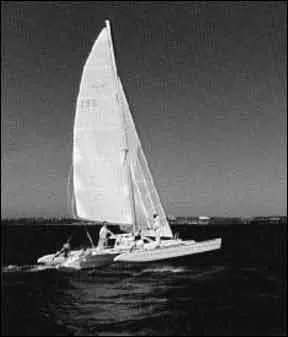
To retract its amas for berthing or trailering, the Dragonfly 800 incorporates a different method than the F-27, to which it is often compared. Whereas the F-27’s crossbeams pull up and in, the Dragonfly’s pivot aft. The advantage is that it’s extremely easy to pull in an ama: Remove the aluminum strut between the hull and crossbeam, ease tension on the rig, loosen the netting and winch it in. The down side is that with both amas drawn in, the boat’s beam is just over nine feet, which is wider than the legal road limit. For trailering, four bolts on each ama must be unscrewed and the ama removed. They stow upside down on the trailer. This isn’t a big deal, but it does take a little longer than commissioning or decommissioning the F-27.
Clearly the rigging of the Dragonfly has been refined over the years as everything is very well thought out. All sail handling operations can be accomplished from the cockpit. For example, the drum of the roller furling gear is located below the deck (at the forward end of the anchor locker), and its control line is led aft to emerge underneath the traveler in the cockpit. Lines to haul the amas in and out emerge from seemingly nowhere on top of the cockpit coaming, right next to a winch. Very convenient.
And a barberhauling system, led from the bow of each ama to blocks on the jib sheet, then to the aft end of each ama and into the cockpit, permit infinite and precise sheeting. The rotating mast also can be controlled from the cockpit. Most controls run through rope clutches on the coachroof.
Performance
We test sailed the Dragonfly 800 on Long Island Sound, on a chilly but sunny day in October. Winds were light—5 to 8 knots. Reaching we were able to sail at the speed of the wind, and nearly so upwind. We were reminded that in a monohull we’d probably be motoring.
Top speed, according to company literature, is about 25 knots, which would have to be one hell of an experience. Above 12 knots, we were told, you get a beautiful roostertail.
The boat tacks easily, pivoting about its centerboard. There is little if any helm, at least at slower speeds, and with the main and jib sheeted in for most points of sail, you feel like you’re driving a go-cart in an empty mall parking lot—just aim and go.
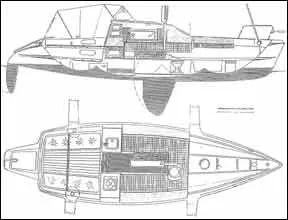
Dragonfly 800 Diagram
Broad reaching we set the spinnaker, which on a multihull is easy because no pole is necessary. And with each clew sheeted to an ama, there is no fear of it wrapping the forestay.
An interesting characteristic of the Dragonfly is that when overpowered, the hull begins to lift and the rudder cavitates, causing the boat to round up. We’re not sure we’d rely on this as our only clue to possible danger, but it’s nice to know that the boat’s natural inclination is to round up rather than flip.
The recommended outboard size is 6 hp., which will move the Dragonfly in flat water at 7.2 knots. It can be controlled from the cockpit, allowing you to turn both the motor and the tiller at the same time, in which case it will do donuts in its own length.
We’ve grown accustomed to the fact that small trimarans don’t have the interior volume of a similar monohull. That said, we found the Dragonfly’s accommodations cheerful and tastefully done.
The V-berths are quite long (about 7 feet), with a tinted skylight overhead. You can’t sit up in bed, but there’s ample leg room. A pull-down privacy blind separates the V-berths from the settees. An optional toilet may be installed under one cushion.
The settees in the main cabin have fold-out panels underneath the cushions that secure against the centerboard trunk; the backrest cushions then fit over the panels and presto, you’ve got two 30-inchwide bunks. Fitted over the centerboard trunk is a teak drop-leaf table. Aft is a small split galley with sink (17-gallon water tank) and single-burner Origo alcohol stove. We did note that the seacocks did nothave flanges, which are recommended by ABYC.
With ash plywood overhead, designer lights, teak trim, and a nice view out the windows from a seated position, time spent belowdecks is pleasant and comfortable. Especially appreciated is the forward facing hatch, which allows a good deal of light and air into the cabin.
The cockpit can become an extension of the living space with the dodger and Bimini erected and zipped together. Both fold unobtrusively out of the way and are further illustrations of how everything on this boat fits together just so.
For us, buying a Dragonfly would be like buying a Porsche, a strong move that puts you back in touch with the road. Though company literature states that boats may be custom equipped at the factory for transoceanic passages, we would not attempt it. In fact, we like this boat better without confusing its purpose. To our mind it’s a terrific daysailer and an adequate coastal cruiser.
Choosing between the Dragonfly 800 and F-27 is tough. With a 1993 base price of $49,500, the Dragonfly is about the same as an F-27, but includes many standard items that are optional on the F-27, such as sails and roller furling. It’s also a foot shorter and does not have the F-27’s aft cabin with extra berths. Frankly, we like the looks of the Dragonfly’s open transom better, as well as the convenience it affords swimmers. On the other hand, the F-27’s aft cabin gives some folks an added sense of security in the cockpit. Which you favor may depend on whether you need those extra berths. As far as main cabins go, we favor the Dragonfly’s.
Our final impression of the Dragonfly 800 is that it’s just plain fun to sail. We like it.
RELATED ARTICLES MORE FROM AUTHOR
Hi! Darrell, I’ve recently acquired a damaged Dragonfly trimaran 8M, and while I love the tri with lots of multi experience, I’ve fallen into a rut and need some help. I’ve searched the web for info on the ‘folding system’ and can only find a different model to mine, (Canadian model) with ‘balsa core’. The system I did find has ‘folding ropes’ coming from ‘inside’ the beams and mine doesn’t. any help from you or your readers would be greatly appreciated. Also to help motivation, (as I get older), I’d like to acquire a MODEL of an 8 or 9.2M MODEL of the tri., I’m quite happy to beg, borrow (with deposit) or buy it if available. I appreciate the great work you do, and Thank You very much, ‘B J’.
LEAVE A REPLY Cancel reply
Log in to leave a comment
Latest Videos
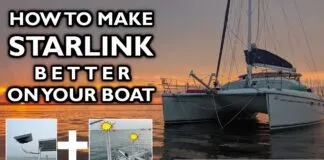
How To Make Starlink Better On Your Boat | Interview

Catalina 380: What You Should Know | Boat Review
- Privacy Policy
- Do Not Sell My Personal Information
- Online Account Activation
- Privacy Manager

IMAGES
VIDEO
COMMENTS
Notes. Following a competition organised by the Royal Yacht Club of Gothenburg, the Dragon was conceived as a "day boat" or small coastal cruising boat. Selected as the 3 man keelboat for the 1948 Olympic Games in London. The designer, Johann Anker was killed in World War II. After the war, his sons waived the royalty for the design to English ...
Dragon (Int) is a 29′ 2″ / 8.9 m monohull sailboat designed by Johan Anker and built by Petticrows, Abeking & Rasmussen, Endeavour Yachts, Børresen Bådebyggeri, and Abbott Boats Inc. starting in 1928. ... the Dragon was conceived as a "day boat" or small coastal cruising boat. Selected as the 3 man keelboat for the 1948 Olympic Games ...
The Dragon. The Dragon is the pre-eminent one design keelboat in the world. There are Class Associations in 31 countries across the globe and more than 1,300 boats registered as actively sailing. Sailors range from Olympic medallists to enthusiastic club sailors, and aged from 8 to 85, but all find that in different ways the Dragon provides a ...
The Dragon Class is actively represented in 31 countries in 5 Continents. There were 1360 boats registered with the National Associations in 2019. There are many more, perhaps the same number again, which are not currently registered, and which are used for day sailing or cruising, or in store ashore. The Class regularly gets 70-80 boats at ...
Dragon racing in 2008. Wooden dragon, built by Abeking & Rasmussen (1954) on the Großer Brombachsee Magic Dragon used as a bar in Britannia Yacht Club's Dragon pub A wooden Dragon on its trailer, showing the keel shape and rudder arrangement. The Dragon is a one-design keelboat designed by Norwegian Johan Anker in 1929. In 1948 the Dragon became an Olympic Class, a status it retained until ...
The technical storage or access that is used exclusively for anonymous statistical purposes. Without a subpoena, voluntary compliance on the part of your Internet Service Provider, or additional records from a third party, information stored or retrieved for this purpose alone cannot usually be used to identify you.
The Dragon int is a 29.17ft fractional sloop designed by Johann Anker and built in wood or fiberglass by Abbott Boats Inc. since 1928. The Dragon int is a moderate weight sailboat which is a good performer. It is very stable / stiff and has an excellent righting capability if capsized. It is best suited as a coastal cruiser.
SailboatData.com …is a database that contains information on over 9000 production and semi-production sailboats dating back to the late 1800's. COMPARE BOATS To compare up to three boats at one time, click the (+) Remove a compared boat by clicking (-)
Necessary cookies are absolutely essential for the website to function properly. This category only includes cookies that ensures basic functionalities and security features of the website. These cookies do not store any personal information.
The Dragon Class Sailboat is one of the most elegant and prestigious keelboats in the world, with a rich history and a loyal community of sailors. Learn more about this classic design, its features, events and rankings at the official website of World Sailing.
The name of the design was, of course , the Dragon and the first was built in 1929. The dimensions were, and remain, LOA 8.9m, LWL 5.7m, beam 2.0m and draught 1.2m with a total overall weight of 1,700 kg. The Dragon quickly became popular in many nearby countries. International competition began with the donation of the Dragon Gold Cup by the ...
But not the Dragon. Designed in 1929 by Norwegian Johan Anker, the Dragon was made an Olympic class in 1948 and remained one until 1972, since when the elegant and distinctive keelboat has ...
Racing Rules (World Sailing) Racing Rules of Sailing 2021-2024 Note there are often country prescriptions to the World Sailing Rules. Racing Dragons. Under the Class Rules, if you plan to race your Dragon, you must have a valid Measurement Certificate and you must be a current member of your National Dragon Association.
The Dragon is 8.90m (29ft 2in) long, with a beam of 1.95m (6ft 5in), draft of 1.2m (3ft 11in) and a hull weight of 1700kg (3, 700 Ib). Working sail area is 27.7 m2 (298 sq ft) with a 23.6 m2 (254 sq ft) Spinnaker. The dragon is raced with a crew of either 3 or 4 people with a maximum crew weight of 285 kg.
Yes. How many people sail as a crew including the helm? 4. Ideal combined weight of range of crew: max weight 628 lb (285 kg) Boat Designed in 1929. Length (feet/inches): 29 feet 2 inches. Beam: 6 feet 5 inches. Weight of rigged boat without sails: 2 tons. Draft: 3 feet 10 inches. Mast Height: 35 feet (stepped to keel)
Complete Sail Plan Data for the Dragon Sail Data. Sailrite offers free rig and sail dimensions with featured products and canvas kits that fit the boat. ... Sailboat Data ; Dragon Sail Data ; Dragon Sail Data. Pinit. SKU: X-SD-5868 . Quantity discounts available . Quantity Price; Quantity -+ Add to Cart . Details. Details. Beam 1.95m Draugh 1 ...
Kelsall Sailing Performance (KSP): Another measure of relative speed potential of a boat. It takes into consideration "reported" sail area, displacement and length at waterline. The higher the number the faster speed prediction for the boat. A cat with a number 0.6 is likely to sail 6kts in 10kts wind, a cat with a number of 0.7 is likely ...
Contact us for information on importing a Dragon to the US or Canada. Equipment For Sale. Dragon sails for sale - Jibs, mains, spinnakers. Excellent for club racing. North, Elvstrom and Hoj Jensen. ... Latest News. 2023 IDA AGM Papers October 2023 Latest Newsletter September 2023 2023 US Sailing One Design Survey February 2023 2022/2023 IDA ...
LOA folded: 14.17 m / 46.5 ft. Beam folded: 4.0 m / 13.12 ft. Optional 57 hp motor. The Dragonfly 40 is available in four versions: -Touring version with self-tacking jib (Standard). -Ultimate version has a taller and more powerful rig and larger overlapping furling headsail (photo above). -C Ultimate Carbon version with floats-, beams ...
Rigging Line - 100lb 8 Braid Premium Quality Dyneema Line. From $ 4.95. PREORDER 2024 DragonFlite 95 v2 RTR w/FSi6 Radio System. $ 489.00. PREORDER 2024 DragonFlite 95 v2 PNP (No radio System Included) $ 449.00. PREORDER 2024 DragonForce 65 650mm v7 PNP Bundle (No Radio System included) $ 249.95.
International Dragon Class Rules. DRA Class Rules 2024. DRA Class Rules Changes 2024. Rules for Classic Dragons. Technical Committee Rulings.
The first boat was launched in 1981; the 800 Swing Wing is a third generation model, introduced in 1989. Construction is unidirectional fiberglass with Airex coring in the hull and deck. The glass work looks first-class with no ripples, clean edges, and many nice details such as a comfortable angle for the cockpit coaming/backrest.
1957 Dragon 29. * Price displayed is based on today's currency conversion rate of the listed sales price. Boats Group does not guarantee the accuracy of conversion rates and rates may differ than those provided by financial institutions at the time of transaction. Find Sail Dragon boats for sale in your area & across the world on YachtWorld.